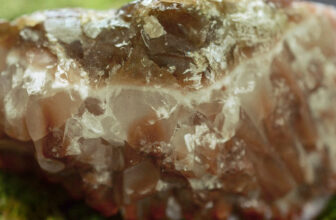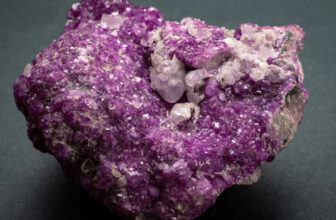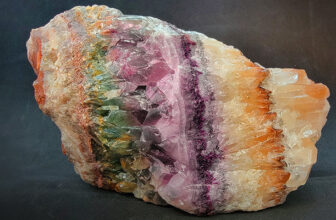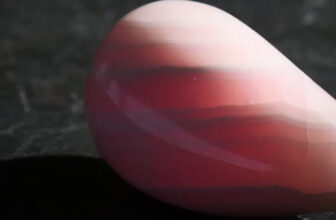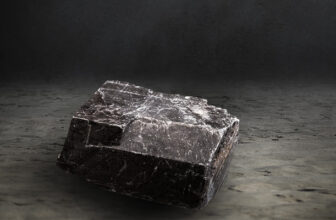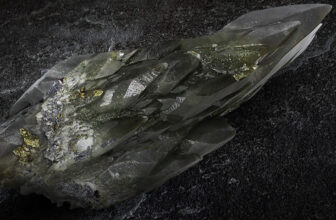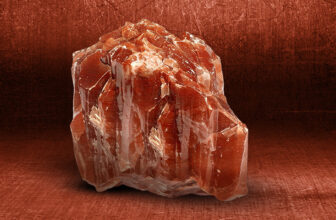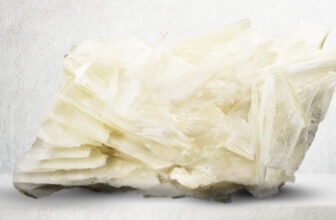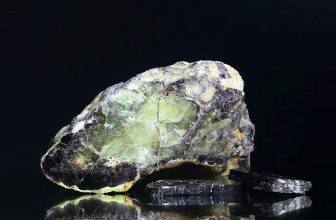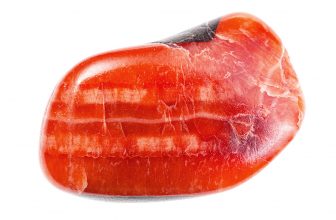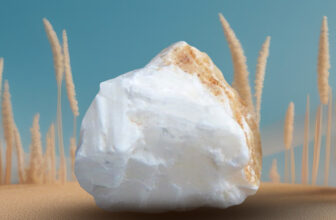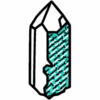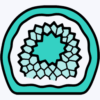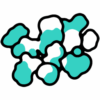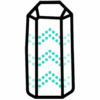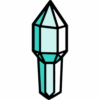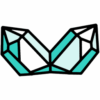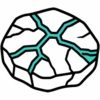Curved Crystals: When Stone Learns to Sway
 The Quiet Talent of a Crystal That Doesn’t Stay Straight
The Quiet Talent of a Crystal That Doesn’t Stay Straight
Have you ever felt like life keeps pushing you in one direction, then another, until you’re not sure which way is “straight” anymore? Curved crystals know that feeling well. They begin with rigid geometric rules, yet somewhere along the way, nature nudges them, and instead of shattering, they simply… bend.
These unusual formations – sometimes called Bent Crystals or Warped Formations – challenge our assumptions about how minerals should look and behave. A crystal that bends? A mineral that arcs like a bowstring or sweeps in a soft, elegant twist? It almost seems impossible.
But curved crystals are reminders that structure doesn’t need to be stiff. That strength isn’t always linear. And that sometimes, the most beautiful forms arise when something adapts instead of resisting.
When the Earth Applies Pressure (and the Crystal Chooses Grace)
When was the last time you felt squeezed by responsibilities, expectations, or sudden change? Crystals experience pressure, too – but their responses are surprisingly poetic.
Curved crystals begin their lives with the same strict atomic architecture as any other mineral. Straight lines. Predictable angles. Perfect symmetry. Then something shifts: pressure rises on one side, hot fluids surge unevenly around the growing crystal, or impurities gather in one area more than another.
The crystal feels the tension. And instead of cracking, its internal lattice quietly rearranges. At first the bend is microscopic, barely noticeable. But as growth continues layer upon layer, that gentle flex becomes a visible arc. It’s like watching a slow-motion bowing gesture, frozen in time.
You’ll find these formations most commonly in tourmaline, beryl, mica, chrysotile, serpentine, and even occasionally in quartz. Fibrous minerals bend the most dramatically, while prismatic minerals may show only slight, elegant curves. Sometimes zoning – subtle shifts in chemistry through different growth episodes – warps the structure gradually.
It’s all a reminder: pressure doesn’t always destroy. Sometimes it sculpts.
How to Recognize a Crystal That Chose to Curve
If you’ve ever examined a mineral and wondered, “Is this truly curved, or did someone drop it?”, here’s the good news – real curved formations are wonderfully obvious once you know what you’re looking for.
Curved crystals rarely break their own flow. Their arcs are smooth, continuous, and almost liquid in appearance. Surfaces curve softly. Terminations bow forward or lift upward like wings. Entire crystal bodies may arc as though drawn by an artist’s steady hand.
Different minerals show curvature in different ways:
- Tourmaline may bend subtly along its length, often due to uneven growth conditions.
- Quartz and Beryl develop gentle arches or slight twists, especially in long prismatic forms.
- Serpentine and Chrysotile curve dramatically because their fibrous layers act almost like mineral “threads.”
- Mica flexes in layered sheets that can bend without breaking at all.
The key distinction? A naturally curved crystal will have no fractures, no abrupt angles, no signs of heat stress or trauma. Damage creates breaks. Curvature creates flow.
In fact, light seems to move differently along curved faces. It glides. It dances. The structure feels less rigid and more organic, almost like a frozen moment of motion.
Three Ways Nature Teaches a Crystal to Bend
Crystals don’t curve randomly; each bend has a story.
1. Gentle Arcs
A slight, graceful curve that runs along the crystal’s main axis. Subtle, soft, easy to miss unless light hits just right.
2. Pronounced Bends
The dramatic U-shapes and bold crescents-rare, eye-catching, almost sculptural.
3. By Mineral Type
- Fibrous Curves: Long, threadlike or layered fibers that bend easily (serpentine, asbestos).
- Prismatic Curves: Typically rigid minerals like quartz or tourmaline that bend only under unusual pressures.
- Layered Curves: Mica sheets bending along their natural planes.
4. By Cause
- Growth-Induced: During formation, uneven nutrient flow nudges the lattice gently.
- Deformation-Induced: Geological forces bend the crystal long after it’s formed.
- Thermal/Chemical: Subtle gradients warp the structure slowly, layer by layer.
No matter the cause, the outcome is the same: a mineral shaped by movement rather than stillness.
The Metaphysical Story: Learning to Bend Without Breaking
Do you ever feel like you’re being asked to stay strong, but also soft? To hold shape while still letting life change you? Curved crystals hold that paradox beautifully.
Their energy is all about flexibility without losing identity. Resilience without resistance. Grace under pressure.
People often turn to curved crystals for:
- easing rigid thought patterns
- softening emotional tension
- adapting to transitions
- embracing change that once felt intimidating
- finding fluidity during spiritual awakening
Each mineral adds its own flavor:
- Curved Tourmaline: Protection and grounded transformation.
- Curved Quartz: Clarity that remains steady while circumstances shift.
- Curved Serpentine: Renewal, Earth-connection, and inner adaptability.
There’s a gentle wisdom in their presence:
Life bends you sometimes – but you get to choose how.
Curved crystals encourage you to trust the arc, trust the redirection, trust the shape-changing journey. They remind you that a path doesn’t need to be straight to be strong. And that resilience, in its most elegant form, is flexible.

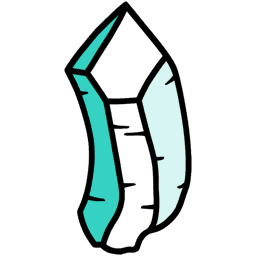 The Quiet Talent of a Crystal That Doesn’t Stay Straight
The Quiet Talent of a Crystal That Doesn’t Stay Straight